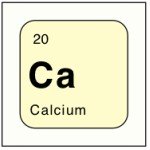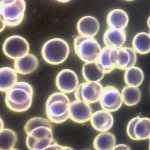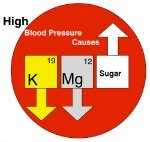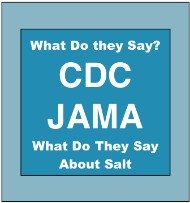Natural Health Solutions
- The Well (Home Page)
- Water Cures Blog
- How To Do Water Cures
- What is Water Cures?
- Electrolytes & Salt
- Drinking Water
- Hire a Hydration Coach
- Acid Reflux
- Addiction Treatment
- Allergy Relief
- Blood
- Bones and Joints
- BP / Heart / Vascular
- Brain / Head / Mental
- Cancer
- Chronic Fatigue
- Cramps No More
- Dehydration
- Edema
- Fibromyalgia
- HIV / AIDS
- Immune System
- Lungs / Respiratory / Cough
- Lupus
- Lyme Disease
- Multiple Sclerosis
- Pain
- Skin Care
- Urinary Tract Infection
- Womens Health
- Water & Weight Loss
- Student Grades
- Survivalist Health Care
- Pet Water Cures
- Hydration Coach
- Testimonials
- My Water Cures
- FAQ
- In The News
- Volunteer
- About / Contact
- Red Light Therapy
- Live Blood Microscopy
Lyme Diseases Answers to Lyme FAQ
Below are a compilation of Lyme Disease Answers to the most frequently asked questions. Some of the topics covered include Lyme disease information, Lyme disease stages, Lyme disease symptoms diagnosis.What is / are the....
2) First Symptoms of Lyme Disease?
3) Chronic Lyme Disease Symptoms?
4) Lyme Disease Symptoms Diagnosis?
7) Joint Pain Lyme Disease Symptoms?
10)Other Insects That Can Give Me Lyme?
1) Q. What is the History of Lyme Disease?
A.The history of Lyme disease starts in 1975 in Lyme, Connecticut, USA.
In that year, a mother in Lyme Connecticut noticed that a number of children all had juvenile arthritis. Thinking this was unusual, the concern led to research that found the bacterial cause which was later named after the town where everything started. It became known as "Lyme disease" in 1982.
The Lyme disease spirochete bacterium, called Borrelia burgdorferi, can be spread through the bite of infected ticks. Incidentally, the small crawling ticks that spread Lyme are of the spider family. This means they are not insects, rather, they are arachnids. Ticks carry a number of bacteria and viruses or pathogens that cause diseases in humans and animals.
Research Defined the Sources and Geographical Locations of Lyme SpreadingThe blacklegged tick (also known as deer tick, Ixodes scapularis) is the primary source that spreads the disease in the North Central US to the Northeastern United States.
In the Pacific Coast, the western blacklegged tick (Ixodes pacificus) is the main source of the spread of the disease.
In the Southern United States, the lone star ticks (Amblyomma americanum) can transmit Lyme disease or other diseases that are closely related to Lyme.
While ticks can get on any part of the human body, they are often found in places that are hard-to-see like the groin, armpits, and scalp. Normally the tick must be attached for at least 36 to 48 hours before the Lyme disease bacterium can be transmitted.
Usually infection comes through bites from immature ticks called nymphs. Nymphs are the smallest size in the growth and development of the tick (less than 2 mm). Because they are so small, they are difficult to see.
You are at greatest risk of being bit by them in the spring and summer months.
The adult ticks likewise transmit Lyme disease. Because of their larger size, they are more likely to be seen and removed before they can infect you. The adult Ixodes ticks are more active during the cooler months of the year.
While some websites as of October 2016 say that only deer ticks (Ixodes scapularis or Ixodes pacificus) can transmit the Lyme bacteria. They carry the spirochetes in their stomachs.
Currently, there have been infections reported in all 50 states, throughout Europe, the former Soviet Union, China, Japan, and Australia.
In the United States, infections happen most often in the Northeast from Maine to Maryland. In the Midwest states, Minnesota and Wisconsin are the areas where you are at greatest risk. In the Western US, Oregon and Northern California are the areas where the greatest numbers of infections are reported.
Plumb Island: Conspiracy Theories or Maybe FactIt is interesting to note the back story around Lyme disease. It starts in a place off the coast of Lyme, Connecticut called Plumb Island. Lyme was thought to be the weaponized form of the bacteria. The goal, make enemy soldiers too sick to fight and save lives. Unfortunately, the concept escaped the lab and has infected people since...or at least that is the theory.
Back to top of Lyme Disease Answers2) Q. First Symptoms of Lyme Disease?
A. The first symptoms include the bulls eye rash and numerous mild symptoms.
The first indication of infection (cellulitis) is at the location of the tick bite. Then in the next several days the circular bulls eye rash called erythema migrans, or EM. Many medical websites suggest that it appears in 70 to 80 percent of people who are infected with Lyme disease. However, the actual number is probably far less, perhaps 50% and may be even lower. Considering that over 300,000 people a year are infected and it is rarely seen by health care workers, the number is probably less than 50%. The EM may be in a place that is not observable and thus many do not know they are infected till months or even years later when the many different symptoms appear.
Further complicating matters, the bulls eye does not necessarily mean you have Lyme disease. While the Lyme tests are not definitive, this opens a possibility.
Not All Erythema Migrans Lesions are Lyme Disease.
Back to top3) Q. What Are The Chronic Lyme Disease Symptoms?
A. Generalized Symptoms Lyme Disease Answers
Generalized weaknessPoor stamina
Fatigue, tiredness, generalized weakness
Severe headaches and neck stiffness (meningitis).
Dizziness
Vision problems
Day sweats Night sweats Chills Rib soreness
Unexplained hair loss
Shooting pains
Burning or stabbing sensations
Sort throat, swollen glands Upset stomach or abdominal pain Unexplained weight loss or gain Unable to lose the excess weight recently put on Unavoidable need to sit or lay down
Shortness of breath Cough that won't go away (with Babesiosis)
Shortness of breath with minimal exertion
Intermittent pain in hands and feet
Change in bowel function: loose stool or frequent liquid stool
Bladder dysfunction, irritable bowel
Testicular pain, pelvic pain
Pains in what would be considered the area of the liver
Intermittent kidney pain, in one or both or may migrate from one side to the other
Pain migrating within the body or organs. (pain will start at one point and over minutes or more, Migrate to another point as if the pain was crawling from one place to another)
Good days and Bad Days (without change in diet, treatment or routine, some days will be good and some bad)
Women may experience worse symptoms right before, during or after their cycle.
Antibiotics taken for another ailment may make you feel better and then symptoms will get worse once completed. Or you may feel worse on antibiotics (called a Jarish-Herxheimer reaction, Lyme bacteria killed release toxins that temporarily worsen the underlying symptoms.
MentalForgetfulness
Poor short term memory that comes and goes
Short-term memory loss
Brain Fog
Lack of drive
Depression
Dizziness
Light and sound sensitivity
Lack of motivation for the activities of daily living
Trouble sleeping (getting as little as 2 to 3 hours sleep at night)
Foggy thinking and memory loss
Memory and concentration problems
Difficulty falling asleep and staying asleep
Disturbed sleep
Too much or too little sleep
Frequent or early waking
Sleeping for as little as 3 or 4 hours a night
Disorientation, getting lost or going to the wrong places
Balance problems
Headaches
Nerve Pain
Skin Hypersensitivity
Facial paralysis (Bell's Palsy)
Twitching of the face or other muscles
Numbness and or tingling in the hands and or feet that comes and goes.
Numbness and burning sensation>/br>
Coldness in the hands and feet that comes and goes.
Electrical sensations, often in lower extremities
Night sweats (with no signs of TB)
Balance and walking problems (this is both a neurological and a muscle problem)
Arthritis pain
Arthritis pains that come and go regardless of the weather or barometric pressure
Vision problems
Stiff neck
Neck creaks and cracks with movement
Stiffness of joints and back
Fatigue
Muscle pains or cramps
Increasing but mild problems with balance
Severe joint pain and swelling, especially in the knees and other large joints
Joint pains in large and small joints
Facial droop on one or both sides due to loss of muscle tone (called Bell's palsy)
Pain in the tendons, muscles, joints and bones that comes and goes.
Joint pain that moves from one joint to another in minutes
Anemia
Irregular shaped red blood cells
Rouleau formation of red blood cells
Early signs of DIC (Disseminated Intravascular Coagulation)
Early signs of myeloproliferative disorders
Irregular heart beats or palpitations (called Lyme carditis).
Feet and or leg edema
Idiopathic cardiomyopathy
Chest pain
Death by heart attack
Medical research literature from 1990 suggests that 8 to 10 percent of Lyme disease Patients have symptoms of heart involvement. Many heart disease patients may actually be suffering from Lyme and continue un-diagnosed. This because Lyme disease can escape detection and or be misdiagnosed.
If you have symptoms of heart disease and and you live in geographic regions where Lyme disease is prevalent, then consider being checked out for Lyme.
Heart conditions caused by Lyme disease are collectively known as Lyme "carditis."
chest pain with palpation's
atrial fibrillation
cardiac failure
cardiomegaly
cardiomyopathy
chest pain
exertional dyspnea
irregular heartbeat (arrhythmia)
myocarditis, palpitations
pancarditis
pericarditis
syncope
tachycardia
blockages in the electrical impulse transmission between the atria and ventricles of the heart.
Heart conduction blockages because of Lyme often require pacemakers or can lead to sudden cardiac death
Heart conditions your physician cannot explain
Both mental and emotional (psychiatric) abnormalities (50 % have psychiatric problems)
behavioral disorders (including impulsive acts of aggression and violence)
bipolar disorder (manic depression)
chronic depression
dementia
anxiety
eating disorders
hallucinations
mood swings
panic attacks
paranoia
schizophrenia
suicidal depression
foggy thinking
memory loss
joint pains
light and sound sensitivity
bizarre, shifting, and even excruciating nerve pain
Unexplained breast pain and or milk production
Back to top4) Q. What is Lyme Disease Symptoms Diagnosis?
A. There is a division among the health care community on how to diagnose Lyme disease. One considers blood work alone and one considers the blood work along with everything going on inside you, making it the Lyme disease symptom diagnosis.
There are two groups driving the treatment of Lyme disease. They are...
IDSA: the Infectious Disease Society of America (IDSA). This group promote methods of diagnosis and treatments that are somewhat restrictive. Diagnosis is primarily based on blood tests. Treatments last for less than 30 days.
The problem is that Lyme and the co-infections are slow growing. Once they are exposed to antibiotics, they create a shell around themselves that makes them impervious to the antibiotics. Additionally, they form biofilms which are also impervious to antibiotics. According to the science, it takes longer than 30 days and could take up to several months to kill the bacteria.
Some people, for genetic reasons, the antibiotics do not work on at all. This is called the NNT or numbers needed to treat. Some antibiotics used for Lyme have a NNT of 1 in 36. In other words, the antibiotics only help one person in 36.
Further complicating the process, many states do not have laws that will allow a doctor to treat lyme outside of 30 days.
What if there was a better way?
ILADS:International Lyme and Associated diseases Society (ILADS) looks not only at the blood work, they promote the concept of lyme disease symptoms diagnosis. One of the key treatments to help improve health is the Water Cures Protocol. Doctors who follow these guidelines are the ones that have the most up to date Lyme disease answers. These are the doctors you want to be seen by.
Their diagnosis focuses not only on the lab tests but also on the symptoms you are experiencing. The minimum treatment they would use is three months and may be much longer in some cases.
Consider, thousands of people have various ailments that alone do not have any specific cause. Or, as in the case of night sweats, things like TB can be ruled out but there is no other reason to explain the cause.
Then adding the mental issues, many doctors will eventually say the it is a cognitive decline....in other words, the mental fog and all the symptoms you are feeling, they are in your head.
Actually, the doctor is right but for the wrong reason. The symptoms you are experiencing are because the spirochetes are in your head but that is not what the good doctor means. The doctor is saying that you don't really have any problems, you are just imagining you do and they are manifesting as the symptoms you are experiencing.
By making the diagnosis based on all the symptoms, it may be possible to not only help you get your health back, it may also be possible to get the bacteria under control. Think of it as putting the infection in remission.
As of 2016, there is no known cure, either natural or medical. We believe there will be one some day. For now, one of the most important Lyme disease answers we can provide, to manage the infection requires maintaining proper fluid and electrolyte balance. This means you need to drink plenty of water and you need to take adequate amounts of unprocessed salt based on how much water you drink.
For those who have a problem with salt because their doctor says to eat less salt and not because of kidney or heart failure, then consider why they would say to eat less even though the science is suggesting that a low salt diet increases your health risks.

5) Q. Lyme Disease Stages?
A.Stage 1: Tick Bite
At least 3 days and up to 30 days following the bite, the bulls eye rash may appear. If it does appear, generally this happens at 7 days. It may expand up to 12 inches in size or even larger in those who it appears in. Some may never get the bulls eye rash.
Less than 50% experience the erythema migraines known as the bulls-eye rash. While some websites report 70 to 80 percent of people experience the rash, this number does not seem to have science nor logic to back it up. Additional EM rashes may appear on other areas of the body as time progresses.
Lime literate doctors have said that most people do not get the EM rash or if they do, it was never seen.
Some but not all experience generalized fatigue, chills, fever, headache, muscle and joint aches, swollen lymph nodes. Some have no symptoms at all.
Stage 2: 3 to 30 Days Following the Tick Bite
Generalized Weakness
Anemia
Severe headaches and neck stiffness (meningitis)
Arthritis pain
Severe joint pain and swelling, especially in the knees and other large joints.
Joint pains in large joints.
Facial droop on one or both sides due to loss of muscle tone (called Bell's palsy).
Pain in the tendons, muscles, joints and bones that comes and goes.
Irregular heart beats or palpitations (called Lyme carditis)
Dizziness
Shortness of breath
Nerve Pain
Numbness, tingling in the hands and or feet that comes and goes.
Coldness in the hands and feet that comes and goes.
Short-term memory loss
Brain Fog
Lack of drive
Depression
Stage 3: Months to Years After a Tick Bite
Arthritis pains that come and go regardless of the weather or barometric pressure
Severe pain and swelling in joints
Continuing intermittent pain in hands and feet
Pains in what would be considered the area of the liver
Intermittent pain in the area of one or both kidneys, it may move from one side to the other
Low drive or motivation for the activities of daily living
Increasing but mild problems with balance
Trouble sleeping (getting as little as 2 to 3 hours sleep at night)
What You Cannot See, At Least Maybe
There may be health issues with your intestines. This will be noticeable in your poo
There may be anemia, resulting in weakness, tiredness or lack of energy
There may be co-infections such as an overabundance of candida
In your blood, observable by dark screen microscopy, there will be visible spirochetes, cocci and possibly gram negative rods
It should be noted that some medical websites and some doctors will try to discredit the Dark Screen Microscopy
In the US, it is illegal for MD's to use Dark Screen Microscopy, however DO's and others can
One such site suggested the bacteria observed was from a contaminated slide. When you have your blood tested, you will usually watch as the live blood is shown to you on a large screen computer monitor. Then after a few minutes, the clinician will break open the red blood cells to reveal the bacteria inside. You will probably not notice any bacteria until the cells are broken open, somewhat dispelling the argument that they were there because of dirty slides. Otherwise, how do they spontaneously appear.
The visualization will not tell you what kind of spirochetes you have, just that you do, indeed have them in your blood. Armed with this knowledge, you will be able to start healing your body.
Also observable will be the cells of your immune system. They will tell if your immune system is working, working poorly or in a serious health challenge. Again, it is easy to see if the cells are normal or abnormal and in some cases, even if they are working.
It is an interesting look inside your own body and what is going on.
Additionally, gut issues may have developed. Again, this could be due to the Lyme co-infections. Some experience extreme weight gain and no amount of exercise or dieting will work to help lose the weight. Only when starting to treat the infection will the weight start to return to normal levels.
Your Poo and What's Going On Inside You
Many times due to the infection side effects, the gut is inflamed and multiple food allergic reactions result. Stools will alternate between formed and loose. It may seem like you have Crohn's disease or irritable bowel.
Missed Diagnoses Lyme Disease Answers
The above stages are some of the many possibilities. Since everyone is different, various combinations of the above may be experienced.
Currently there are some who are saying that many diseases are actually misdiagnosed Lyme or Lyme Co-infections.
These include Chronic Fatigue, Fibromyalgia, Parkinson's, Alzheimer's and Multiple Sclerosis to name a few. We do not fully agree with this thinking. There are over 20 spirochete infections that humans can get. It is possible that rather than simply being Lyme, it is a spirochete infection causing the problem.
Maybe It's Not Lyme But It Is Still a Bacterial Infection
In the case of Alzheimer's, some heart disease, Parkinson's and a few others, there is increasing evidence of spirochete infection in the people who are afflicted. This is not a new theory. It was first suggested in 1907, then again in 1910 by Dr. Alzheimer and associates, yes by the doctor who first identified Alzheimer's. There are over 50 studies produced suggesting bacteria as the cause in the past 20 years.
Most people never get the bulls eye rash. Some experience many of the symptoms and some only a few. The varied symptoms can easily be confused as something as mild as the flu or as serious as MS.
We propose that since there are over 20 known possible spirochete infections and numerous potential co-infections, what if it is not simply or always Lyme disease. One doctor proposed to call it MSIDS or multiple systemic infectious disease syndrome.
Limiting the diagnoses to just calling it Lyme until we have a complete understanding of what it is could limit the treatment possibilities.
Not All Erythema Migrans Lesions are Lyme Disease.
Lyme Disease Surveillance in New York State: an Assessment of Case Under-reporting.
Back to top6) Q. Lyme Disease Prognosis?
A.To understand the Lyme disease prognosis, it is important to first know what the word prognosis means.
According to the dictionary, prognosis means...
...the likely way a disease or ailment will affect you:
"the disease has a poor prognosis"
...a forecast of the likely way a disease or ailment will affect you:
"it is very difficult to make an accurate prognosis"
The Lyme disease prognosis is one of the most challenging of Lyme disease answers as there are so many factors to consider. Here are some of the variables and potential prognosis's. Remember, these are basic and generalized. Numerous factors can change the prognosis such as age (very young or old), current health, oral health, the amount of mercury in your teeth, the amount of plastic in your teeth. Also things like diet and hydration habits can drastically affect the prognosis.
Most importantly, your ability to comply to a treatment regimen could affect the prognosis.
2 Schools of Thought on Lyme Prognosis
There are two doctor groups that have very different thinking about the treatment and outcomes of Lyme disease.
One group is the Infectious Disease Society of America (IDSA) promote methods of diagnosis and treatments are very restrictive. The diagnosis depends mostly on blood tests. Treatments last for a maximum of about 3 to 4 weeks.
Bob Butts, founder of WaterCures.org was diagnosed with Lyme Disease about the same time his dog was also diagnosed in early 2016. When taking a new rapid Lyme test, he was positive. Additionally, there was also visible spirochetes in his blood when it was looked at under dark screen microscopy. Yet on going to one of his MD's, he was told that he did not have Lyme and probably never had it. This is how divided the medical world is over Lyme disease.
The International Lyme and Associated diseases Society (ILADS) has a more comprehensive view and longer treatment. The treatment focuses not only on the lab tests but also on the symptoms you are experiencing. The minimum treatment they recommend is three months.
Prognosis With No Treatment: Make no mistake, Lyme can kill you.
Prognosis If Treated Early and Effectively After Infection: Very good chance of totally curing Lyme disease. The key to success is early and effectively.
Prognosis When Treating Chronic Lyme Disease: If treated effectively, it is possible to put it into remission. Chronic or persistent Lyme disease cannot be cured, yet. It can however be controlled, or put in remission. It can return when facing stress or other health challenges.
Back to top of Lyme Disease Answers7) Q. What are the Joint Pain Lyme Disease Symptoms?
A. Lyme disease, if untreated (you may not even know you were infected), may not present any symptoms for weeks or even months. Additional months or even years may pass before a Lyme diagnosis will be given.
If you have chronic or persistent Lyme disease, then you may have noticed that any illness or increase stress you experience could cause the Lyme disease to flair up.
The joint pain may be sever. There may be swelling. It can be one or the other joint or both. While it most often affects the knees, the pain may affect other joints such as the toes or fingers. Some have noticed that the pain can move from one side to the other. For others, the pain may be in both joints.
While we don't think of our neck as a joint in the same way we think of our knee joint, some experience neck stiffness, neck pain and or creaks and cracks.
Back to top of Lyme Disease Answers
8) Q. What are Symptoms of Advanced Lyme Disease?
A. Symptoms of late stage or advanced Lyme disease (stage 3) can occur months or years after the initial infection.
While he most common symptoms are joint and muscle pain, those infected may experience any or even several of the symptoms. Many times, the onset of symptoms are unnoticed until there are several all at once. Then the association that the various symptoms are not just age related, but are something bigger becomes apparent. Some do not take note until there their health reaches the tipping point. Left unattended, Lyme disease and or the co-infections will eventually kill.
As an example, numbness and tingling in the extremities may be attributed to sitting wrong or sleeping on a limb. Then when the feet and or hands get very cold, if it is in the winter time, it is considered a seasonal thing. In reality, it is abnormal. Because of the way it appears, it is not recognized as something to be concerned about.
Likewise the arthritis pain is thought to be arthritis and not the spirochete infection related to the Lyme disease. What ever the cause of arthritis, drinking more water and taking unprocessed salt (basically the oral version of a saline IV) will end the arthritis pain.
The complications of late stage or advanced Lyme disease include not just the joints, but also the nervous system including the brain and eyes. Think Alzheimer's, Parkinson's and ALS.
Please Note: Any would be flamers, before you say this is crazy, please check the NIH site for Alzheimer's, spirochetes and neurospirochetosis. It as been suggested as a possible cause as far back as 1907 and then again in 1910. The doctor who suggested Alzheimer's could be caused by bacteria was the doctor that the disease is named after.
Additionally, it can affect the heart and circulatory system. Again, there is considerable science to back this up.
Advanced Lyme Disease Arthritis
Arthritis is one of the most common late stage Lyme disease symptoms. The pain is most often noted in joints and includes swelling. Usually it affects large joints such as the knees and hips. This kind of arthritis is often debilitating and severe.
Research has shown that treatment with appropriate antibiotics often relieves the pain.
Advanced Lyme Disease Neurological Complications
Late stage Lyme disease can affect the brain itself.
Advanced Lyme disease causes neurological symptoms in about 20% of the people infected. This is experienced as chronic numbness, tingling and or cold hands and feet that is the result of nerve damage. The medical term is called peripheral neuropathy.
When late stage Lyme disease affects the brain, it is called Lyme encephalopathy. The symptoms include difficulty with concentration, short-term memory loss, personality changes and mood swings. Simple tasks such as reading and remembering what you read will be very difficult. Even having the ability to concentrate when reading is difficult.
Lyme encephalomyelitis is also a symptom of advanced Lyme Disease. It is a progressive disorder that involves the brain and spinal cord. It may lead to and may lead to impaired thinking and difficulty walking.
Back to top of Lyme Disease Answers
9) Q. What is Dormant Lyme Disease?
A.When Lyme disease is dormant for a long time before it is manifest, the symptoms are often not distinguishable as Lyme disease.
If you have been to numerous doctors and have not been able to get a successful treatment, then consider Lyme disease. If you have been told that you have some sort of autoimmune disease that is not clearly defined, then consider the possibility of Lyme disease.
If you have been told that Alzheimer's, Parkinson's, Chronic Fatigue, Fibromyalgia, then consider the possibility of Lyme disease.
If you have respiratory issues, cardiac health issues, joint pain, visual problems, mood issues or anything weird and your doctor is not providing any relief, then please find a Lyme literate doctor and consider the possibility.
If you have been diagnosed as mentally ill because your medical tests have returned with negative and there is no cause for your symptoms, then consider the possibility of Lyme disease as being the problem.
.If you have dark screen microscopy blood work and there are bugs in your blood, then by all means, consider Lyme disease as the cause of your health issues. If you happen to live near North East Pennsylvania, we have a ND that can provide dark screen microscopy.
Back to top of Lyme Disease Answers10) Q. What are the Other Insects That Can Give Me Lyme?
A. Many have the question, can other bugs give me Lyme?
Research have found spirochetes in mosquitoes and blood sucking insects. Ticks are not insects, rather, they are arachnoids or of the same family as spiders. While there is no evidence that these other bugs can spread Lyme disease, it is believed by many experts that they can.
Consider that the CDC has indicated that over 300,000 people a year are infected. This is probably more people than regularly walk in the woods and are exposed to the habitat of ticks.
Back to top of Lyme Disease Answers11) Q. Is There a Lyme Vaccine?
A.As of October 2016, there is no vaccine for Lyme....yet.
Research is promising.
The saliva of ticks has a immune suppressor that help spread the bacteria throughout the body of the infected.
Yale researchers found a protein found in the saliva of tics protected mice from developing Lyme disease. In the Cell Host and Microbe, it was suggested that this could help in the search of a new vaccine against Lyme disease.
When the Lyme bacteria (Borrelia burgdorferi) is passed from the tick to its new home, it is coated with a tick salivary protein called Salp 15. The researchers injected the Salp 15 into healthy mice. Turns out it protected the mice from getting Lyme disease.
So, there is hope on the horizon for a Lyme vaccine. Below are more Lyme disease answers.
Back to top of Lyme Disease Answers
12) Q. Does Lyme Disease go Away?
A. If the Lyme disease is caught early, it is possible to eliminate it from the body. If it becomes persistent or chronic, then currently there is no way to totally eliminate the bacteria from the body.
Back to top of Lyme Disease Answers
Recent Articles
-
Dark Screen Microscopy: What it is, does and what it can tell you.
Jul 07, 19 05:23 PM
Dark Screen Microscopy allows for a BioNutritional Auditi to look at your blood in its whole, live state -
About Water Cures and how water can help improve your health and life
Oct 25, 18 09:38 PM
About water cures: information on the Water Cures Protocol, Dr. Batmanghelidj and the founder of this site, Bob Butts.. -
Water Cures Testimonials
Apr 16, 18 09:26 PM
Water cures testimonials of those who improved their health using the water cures protocol.
October 22, 2018...
Robert Butts, founder of WaterCures.org passed away at the age of 83. He will be missed.

 |
 |
Warning: Research shows calcium supplements may be harmful to your health.
| Fixing Blood Disorders
Posted December 2016 |
 |
© 2016 Jonathan Steele
It is amazing how so many things that are new to us were common knowledge in the past. One basic practice of the Water Cures protocol is to drink at least 30-45 minutes before and 2 1/2 hours after a meal. This is not a new thought however. Notice what a magazine from 1925 had to say...
"Drink plenty of water two hours after each meal; drink none just before eating; and a small quantity if any at meal time. Do not take a bath until two hours after eating a meal, nor closer than one hour before eating. Drink a full glass of water both before and after the bath." (Golden Age, Sept. 9, 1925, pp. 784-785)
 |
New in 2016
Cancer 1, Natural Cures 0
The War...is against...
Cancer Natural Cures
---------------------
| Hand Joint Pain: How Can I Make It Go Away? |
 |
 |
to try a no cost, scientifically proven way of improving your well being?
Click Here to try the 3 Minute Challenge
Find them right here!
 Shoulder Joint Pain Relief Shoulder Joint Pain Relief |
 |
 |
What Your Doctor's Not Telling You!
 High Blood Pressure Causes High Blood Pressure Causes |
 |
 |
We started expanding on the causes...
The weirdest...chimney sweep cancer. You won't believe where it strikes.
Our theory on...
Healthy Hydration for Athletics & the reason for hydration guideline failures in the past.
We speak to organizations small and large, private and corporate.
Our scientifically proven training works to improve performance and decrease lost days due to illness.
We are currently speaking to hospitals to train staff in ways to decrease the readmission rates in several disease processes that pose high risk of <30 day readmission.
We can cut the rates by up to 70%. Ask us how.
Nurse Jon for more information on hydrating to improve performance.
Here is the Science
We are not promoting increased salt intake. We are suggesting taking salt in amounts appropriate to your bodies needs, based on water needs. Our needs are not one size fits all.
Note: Do you have CHF or Kidney Disease? Then.....
THIS IS NOT FOR YOU.
 |
Read This Study
And Decide for Yourself
 |
For Most of Us, No!
According to a JAMA study.
A Review of the above JAMA Article
Study: Salt May Not Be All Bad?
Listen to your body. Do not use this if you are under a doctors care. Do not stop taking medications without consulting your doctor. If you are on medications, consult your doctor if you start the Water Cures Protocol as it may change your needs.
 |
Click Here to Discover How
 |
Click Here
Sign Up for your biweekly newsletter.
 |
 |
 |
If you are looking for an affordable alternative natural health care for depression, consider the Water Cures protocol.
Like What You're Learning? Please share your likes on Facebook
 |
 |
 |
 |
Hi, my name is Sharon. The webmaster of this site is my nurse, my personal water coach and my husband.
As this site was first being built, I had a headache and as usual took an Ibuprofen. Impatient for it to start working, I decided to try the Water Cures. I took a pinch of salt and a glass of water. Then I took a second pinch of salt and another glass of water. My headache was gone in less than 5 minutes.
From my personal experience, it usually takes 30 to 45 minutes for Ibuprofen to work. Some have found it takes ibuprofen 24 minutes to start working.
Yet on the Water Cures protocol, my headache was gone in 5 minutes.
Its simple: give your body what it needs and your body will give you what you need, the ability to feel great.
Water Cures was the solution for the elimination of my headache. It is what I will use from now on.
Why not give it a try yourself.
